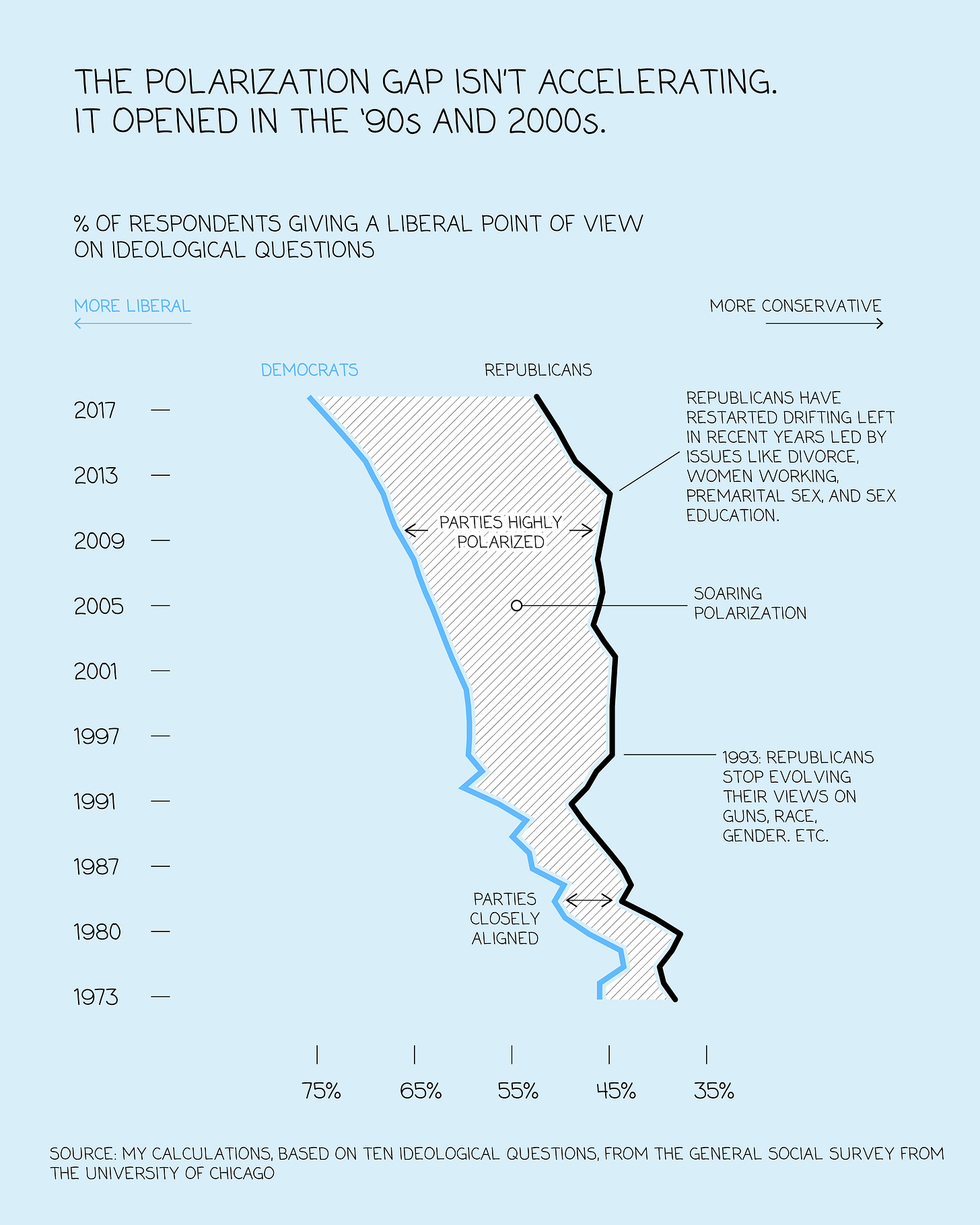Why is America so politically polarized?
Amidst a bipartisan drift towards liberalism, a handful of issues are hugely divisive
Being an unrepentant data nerd, I was delighted when I recently came across an incredible dataset from the boffins at the University of Chicago. Through the General Social Survey (GSS), they’ve been surveying Americans for their views on all kinds of questions—from the ethics of spanking kids to their opinions of Canadians (nothing about the ethics of s…
Keep reading with a 7-day free trial
Subscribe to Home Economics to keep reading this post and get 7 days of free access to the full post archives.




